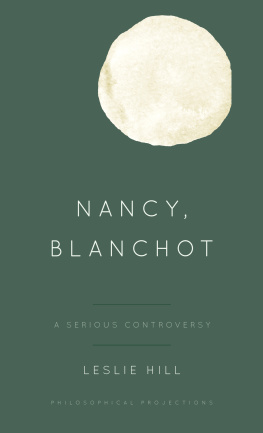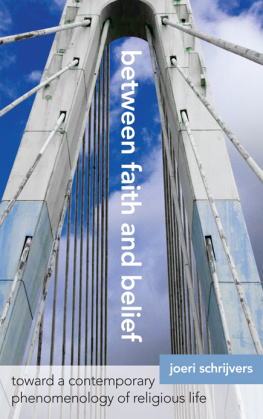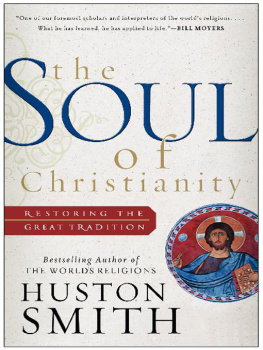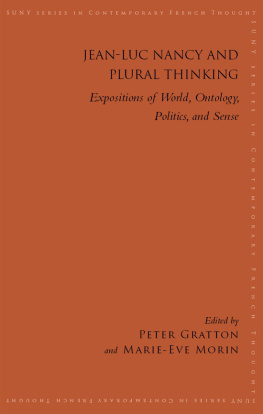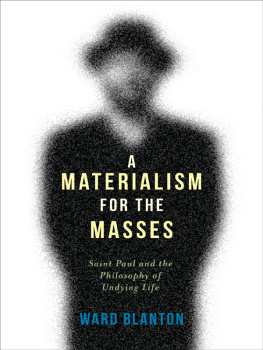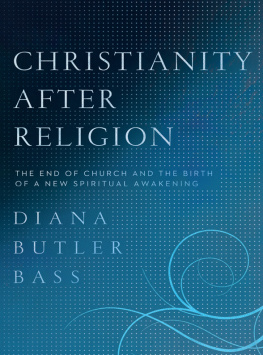Dis-Enclosure
Series Board
James Bernauer
Drucilla Cornell
Thomas R. Flynn
Kevin Hart
Jean-Luc Marion
Adriaan Peperzak
Richard Kearney
Thomas Sheehan
Hent de Vries
Merold Westphal
Edith Wyschogrod
Michael Zimmerman
John D. Caputo, series editor

JEAN-LUC NANCY
Dis-Enclosure
The Deconstruction of Christianity
TRANSLATED BY BETTINA BERGO, GABRIEL MALENFANT, AND MICHAEL B. SMITH

Copyright 2008 Fordham University Press
All rights reserved. No part of this publication may be reproduced, stored in a retrieval system, or transmitted in any form or by any meanselectronic, mechanical, photocopy, recording, or any otherexcept for brief quotations in printed reviews, without the prior permission of the publisher.
Dis-Enclosure was originally published in French as Jean-Luc Nancy, La dclosion (Dconstruction du christianisme, 1), 2005, ditions Galile.
This work has been published with the assistance of the National Center for the BookFrench Ministry of Culture.
Ouvrage publi avec le concours du Ministre franais charg de la cultureCentre
National du Livre.
Library of Congress Cataloging-in-Publication Data is available.
Printed in the United States of America
10 09 08 5 4 3 2 1
Contents
Translators Foreword
The original title of this book was La dclosion. That term may be said not to exist in the French language, and it is not farfetched to claim that the volume is itself an explication of its meaning. The word recurs frequently in many chapters, particularly the last one. That chapter shares its title with the volume as a whole, explicating the leitmotif of dclosion and carrying it to the brink of a further dialectical sublation. Therefore it may be useful at the outset to convey our understanding (without pretending to do any of the hard work Nancys texts themselves undertake) of dclosion.
Nancy uses dclosion to designate the reversal of a prior closing (foreclosure), an opening up. This opening is very general: more general than would be suggested by disclosure, which usage is pretty much limited to divulging classified information. Although Nancys subject matter is largely Christianity, as the subtitle, The Deconstruction of Christianity, states, it is not as ecclesiastical as a solution such as de-cloistering would have suggested. We have therefore settled on dis-enclosure, a term whose existential deficiency (like that of the French title it replaces) may be palliated by the fact that enclosure has been used, particularly by British historians, to refer to the movement by which lands previously held privately were made common domain, available for free-range grazing and other communal uses. Now this is, mutatis mutandis, precisely the sense Nancy heralds across a broad range of domains, in which history has closed in upon itself in its indispensable, inevitable, but eventually encumbering assignment of meanings.
This brings us to Nancys final title chapter, in which alongside dclosion another term appears (and this one has its ontological papers in order): closion. The word means hatching, and for flowers (notably in Ronsard) opening, blossoming. Why does Nancy need this less complicated companion term for dclosion? Because the last, short piece moves the reader to a more cosmic perspective, one in which the cancellation of sociological strictures is seen in a broader perspective and (perhaps) in collaboration with a manner of spatial burgeoning, a pregnant structuring of the void. Here we have turned to a real but obscure term, eclosure. It is used in the field of entomology to designate a butterflys metamorphosis from pupa to winged fulfillment.
Before leaving the issue of the title, we would be remiss not to mention that French dclosion is the usual translation of Heideggers Erschlieung, rendered by Macquarrie and Robinson in English as disclosure. Nancy, whose familiarity with Heidegger may well have suggested the use of the term, appears to extend the notion, from its original phenomenological sense of the way in which things give themselves to us to a historical opening up of Christianity in deconstruction. But Nancys most original addition to the overdetermination of this particular signifier is to see Christianity itself as an opening up of meaning in history. This is what allows him to see his deconstruction of Christianity as a prolongation of Christianitys own historical movement.
Nancys style presents serious challenges to the translator, not the least of which is his propensity to express crucial points in language that draws heavily on the signifierthe colloquialism, the Gallicism, the essentialist pun. His free and almost lyric interweaving movement, a farandole between signified and signifier, has often led us to resort to leaps in our own register, if not to the confessional footnote. If reading, as Blanchot said, is dancing with an invisible partner, to translate is to do everything he does, as Ginger Rogers is said to have said, backwards and in heels.
At Nancys request, sens has been translated sense throughout. As he explained to us, in his usage it signifes precisely not meaning but sense more or less as in It makes sense, that is, opening a direction, a possibility of valuea possibility of meaning but not a meaning.
The entire text of the translation has profited greatly from mutual criticism and consultation among the translators. The main translator of each essay is indicated in a translators line at its end. Michael B. Smith would like to express his gratitude to research librarian Xiaojing Zu of Berry College for her technical assistance. Bettina Bergo thanks Philippe Farah, David Bertet, and Hlose Bailly for their assistance. We both thank Helen Tartar for making this project possible.
Michael B. Smith
Dis-Enclosure
Opening
Escheat and Piety
It is not a question of reviving religion, not even the one that Kant wanted to hold within the limits of reason alone. It is, however, a question of opening mere reason up to the limitlessness that constitutes its truth.
It is not a question of overcoming some deficiency in reason, but of liberating reason without reserve: once everything is accounted for, it is up to us to show what remains beyond these accounts.
It is also not a question of repainting the skies, or of reconfiguring them: it is a question of opening up the earthdark, hard, and lost in space.

It is not our concern to save religion, even less to return to it. The much discussed return of the religious, which denotes a real phenomenon, deserves no more attention than any other return. Among the phenomena of repetition, resurgence, revival, or haunting, it is not the identical but the different that invariably counts the most. Because the identical immediately loses its identity in returning, the question should rather be asked, ceaselessly and with new risks, what an identical secularization might denote, inevitably, other than a mere transferal. (It has been a long time since [Hans] Blumenberg effectively raised this problem, even if he did not resolve it at the time.)
Next page



